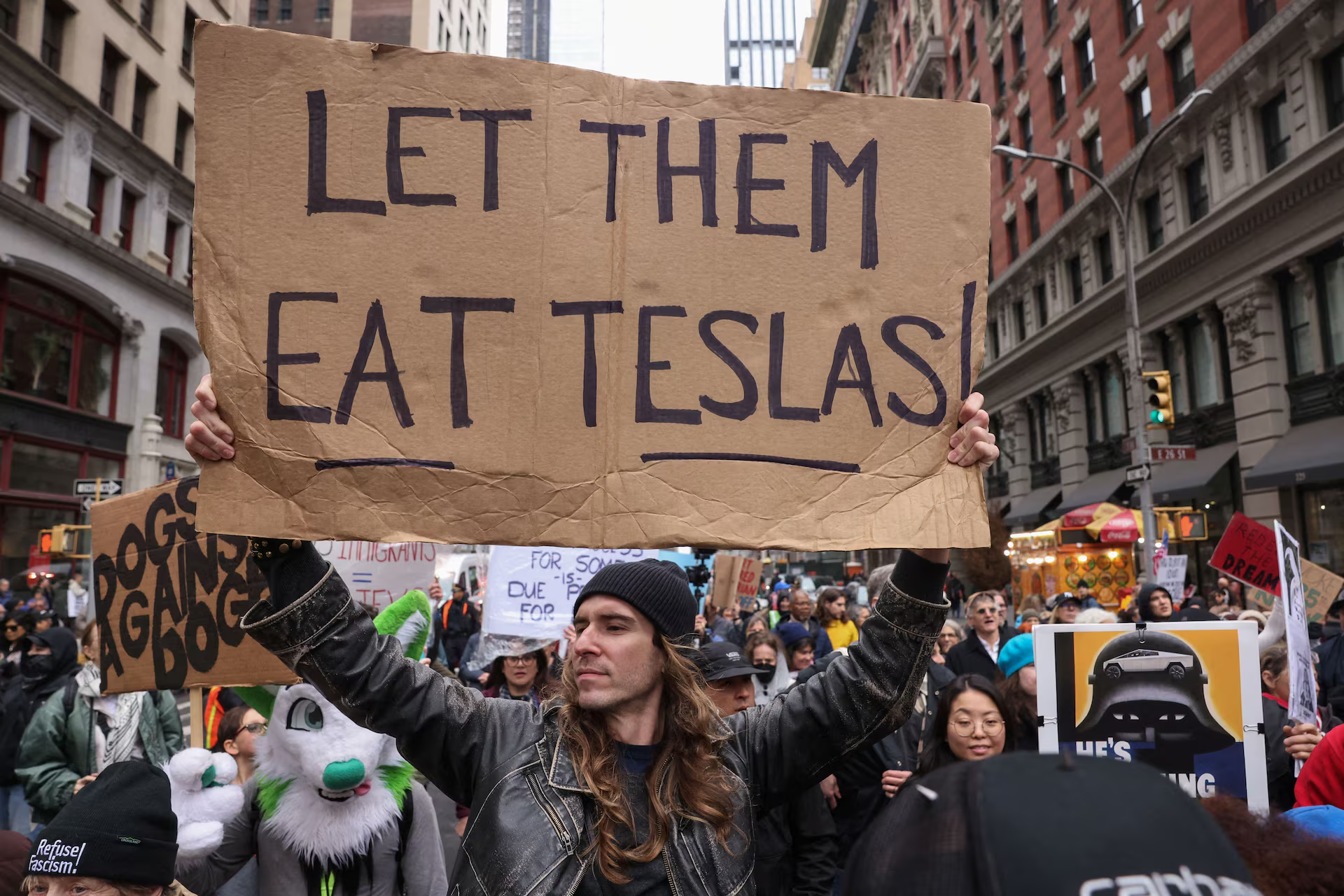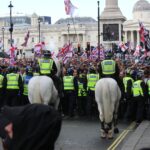London once again became the focal point of global politics today as thousands of demonstrators took to the streets to voice their opposition to former U.S. President Donald Trump’s state visit. The protests coincided with the red-carpet welcome being extended to Trump by British officials, creating a sharp contrast between the pomp of diplomacy and the passion of public dissent.
The demonstration, organized by a coalition of activist groups, trade unions, and civil rights organizations, was one of the largest seen in the capital this year. Protesters marched from Trafalgar Square to Parliament Square, carrying placards that read “No to Hate,” “Stop Trump,” and “Our Values Are Not for Sale.” Many participants expressed frustration not only with Trump’s policies during his presidency but also with what they saw as the UK government’s eagerness to court him as a political ally.
A City Split Between Protest and Ceremony
As the march moved through central London, Trump was attending a ceremonial welcome at Horse Guards Parade, flanked by senior British officials and members of the royal family. The two events, though just a mile apart, painted a vivid picture of the country’s divided mood.
Outside Buckingham Palace, where Trump later attended a state luncheon, the streets were lined with both supporters and detractors. Some waved U.S. and UK flags, cheering the convoy of black cars as it passed. Others turned their backs in silent protest or chanted slogans demanding an end to what they saw as the normalization of a controversial political figure.
Protesters Call for Policy Accountability
Speakers at Parliament Square addressed the crowd, criticizing Trump’s record on climate change, immigration, and human rights. “This is not about party politics,” said one speaker from a civil liberties group. “It’s about standing up for the values we hold dear—fairness, equality, and respect for the rule of law.”
The protest was largely peaceful, with a significant police presence ensuring that traffic disruption was minimized. Officers directed marchers along pre-agreed routes, and no major incidents were reported as of this afternoon.
For many demonstrators, the visit was seen as an opportunity to highlight global concerns about the rise of far-right rhetoric and populism. Environmental activists used the moment to draw attention to the U.S. withdrawal from key climate agreements during Trump’s presidency, while minority rights groups voiced concerns about discriminatory policies and language that they believe foster division.
Government Defends the Visit
Downing Street defended the decision to host the former U.S. president with full diplomatic honors, arguing that the visit was crucial to maintaining a strong bilateral relationship between the UK and the United States. A government spokesperson stated, “The United States remains one of our closest allies. It is in Britain’s national interest to engage with American leaders across the political spectrum.”
This stance, however, has not silenced critics who argue that the UK’s approach risks legitimizing a figure they see as polarizing. Some opposition MPs joined the protests, accusing the government of ignoring public sentiment. “This is not just a ceremonial visit—it is a statement about what kind of country we want to be seen as on the world stage,” said one MP addressing demonstrators.
A Global Audience
The protest attracted significant media attention worldwide, with live coverage on major news networks and trending hashtags on social media platforms. Images of Londoners holding banners and creative effigies quickly went viral, echoing similar protests held during Trump’s previous visits to the UK.
For many participants, the march was about sending a message beyond Britain’s borders. “We know the world is watching,” said a protester from Manchester. “This is about showing solidarity with people in the U.S. who oppose extremism and inequality. It’s about saying that we stand together.”
The Economic and Diplomatic Context
Trump’s visit comes at a time when the UK is seeking to secure new trade agreements post-Brexit, and Washington’s support remains key to those efforts. Analysts suggest that despite the protests, the visit could pave the way for further economic cooperation. Business leaders have been quick to highlight opportunities in sectors like energy, defense, and technology.
However, experts caution that the political optics of the visit could have longer-term implications. “Diplomatic engagement is important, but governments also need to be mindful of public perception,” said a professor of international relations at a London university. “State visits are as much about symbolism as they are about policy.”
Looking Ahead
As the day drew to a close, protesters began to disperse peacefully, and the capital slowly returned to its usual rhythm. Yet the underlying issues that fueled the march remain unresolved.
Tomorrow, Trump is scheduled to meet with UK business leaders and deliver a speech at a joint press conference with the prime minister. Activist groups have already announced plans for further demonstrations, signaling that the coming days will continue to be politically charged.
For many Londoners, today was a reminder of the city’s tradition of public protest and free expression. Whether or not the demonstrations influence policy, they have made one thing clear: the debate over Britain’s relationship with controversial global figures is far from over.



